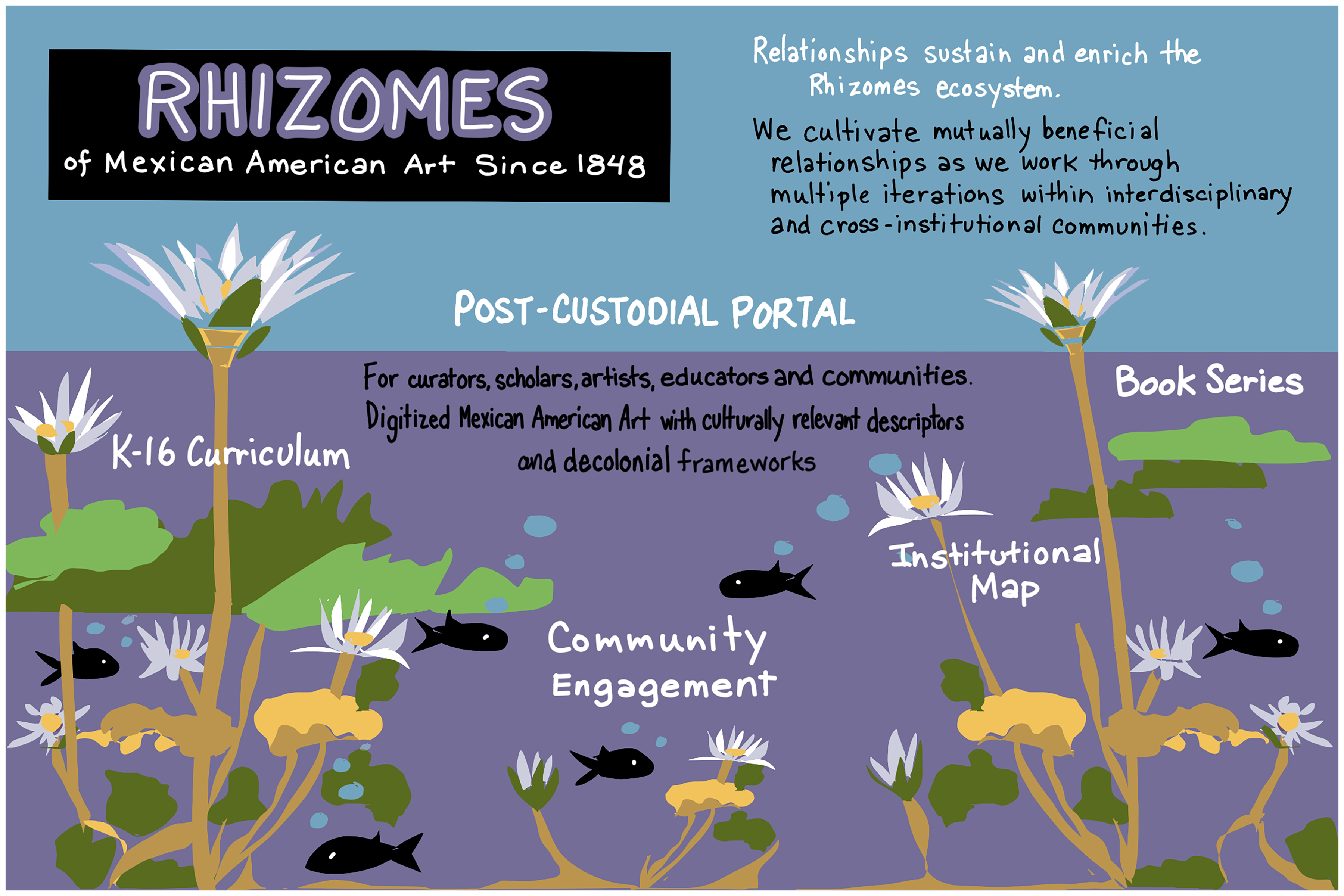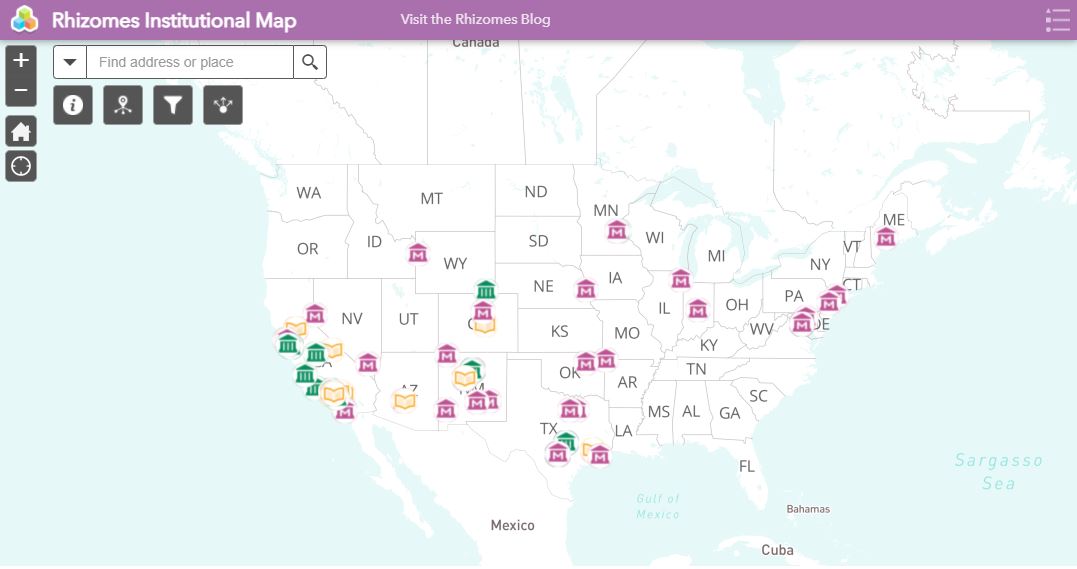Mexican American Art Since 1848 (MAAS1848)
Mexican American Art Since 1848 (MAAS1848) virtually unites digital files of art and related documents from libraries, archives, and museums. Currently, the open-source portal compiles digital collections from national and regional aggregators to enhance the discovery of the aesthetic, geographic, and historical range of Mexican American visual art and related materials. Browse by “Institution” to learn more about our partners.
Mexican American Art Since 1848 (MAAS1848) links to a variety of materials. Some are in the public domain, while others items, usually works of art, are under rights restrictions but are publicly viewable for education and personal research. For individual rights information about an item, check the “Access Rights” or “Description” field of the item. “View Item” takes you to the digital object on the contributor’s website for more information.
Mexican American Art Since 1848 (MAAS1848) directs users back to contributing institutions. By receiving the visitor traffic through the portal, MAAS1848 credits the institutions which steward the art and related materials. This post-custodial design rejects colonial models of knowledge extraction and appropriation by operating an inclusive and democratic method for digital dissemination.
Mexican American Art Since 1848 (MAAS1848) allows research on a scale once thought impossible for scholars, curators, students, and the public seeking cross-disciplinary, comprehensive, and intersectional knowledge about Mexican American art, culture, and history. The portal includes a broad range of art: you can find sculpture, paintings, prints, textiles, lowrider cars, photography, papel picado (cut paper) and more in MAAS1848. An expansive notion of art will increase access, visibility, and understanding about Mexican Americans and the cultural wealth of the United States. The portal also includes related documents to provide historical context or visual references for the art. These materials include photographs, newspaper clippings, reports, art reviews, exhibition catalogues, and so much more.
Harmful Content Statement
Because Mexican American Art Since 1848 (MAAS1848) harvests digital records from libraries, archives, and museums, the descriptions ingested reflect the time, social context, and identities of the people who created the descriptions; this also introduces Eurocentric biases. MAAS1848 actively raises critical awareness of bias, privilege, and power, using an ethos of deliberate care to the assessment, creation, and refinement of descriptive information. MAAS1848 aspires to accurately describe the materials we harvest and to respect the individuals and communities who create, use, and are represented in the collections we virtually unify. Frequently, we remove harmful descriptions, and we add culturally informed language to describe records. As we redress harmful language, hidden lives and erased histories become discoverable for researchers and in the classroom. You can learn more about our efforts and how to contribute to this shift towards removing harmful descriptions and subject terms by visiting the button below.

The Rhizomes Initiative
With the signing of the Treaty of Guadalupe-Hidalgo (1848), some 80,000 residents living in the former Mexican territories became United States citizens. The name of the portal signals the year of this transformation, but it is not the defining parameter. The portal includes art created before 1848 because artists had been working prior to the treaty. Mexican American Art Since 1848 (MAAS1848) is about an American art with multiple influences and references.
Mexican American Art Since 1848 (MAAS1848) is one component of a larger initiative, Rhizomes: Mexican American Art Since 1848. The Rhizomes Initiative has four parts:
1) the portal,
2) a book series,
3) K-16 curriculum, and
4) an institutional map to visualize and identify relevant collections across the nation.
About the Team
Karen Mary Davalos, Professor of Chicano and Latino Studies at University of Minnesota in the Twin Cities, is the leading scholar of Mexican American/Chicano art history and brings experience in addressing research challenges, archival formation, and Community-Based Participatory Research (CBPR).
Constance Cortez, Professor of Chicana/o Art History and Post Contact Art of Mexico, School of Art, University of Texas, Rio Grande Valley, is an established scholar and curator of Mexican American art. She is the only art historian in the nation trained in three historical epochs (pre-Columbian, colonial, and contemporary US and Mexican), making her uniquely qualified to steward this broad-ranging interdisciplinary initiative.
NATIONAL ADVISORY COUNCIL, The National Advisory Council is a growing network of prominent humanities scholars, librarians, archivists, curators, and technical advisors with expertise in Mexican American art history. It provides interdisciplinary and multi-institution perspectives on the planning stages of the Rhizomes Initiative to ensure a broad, inclusive methodological foundation for each component.
